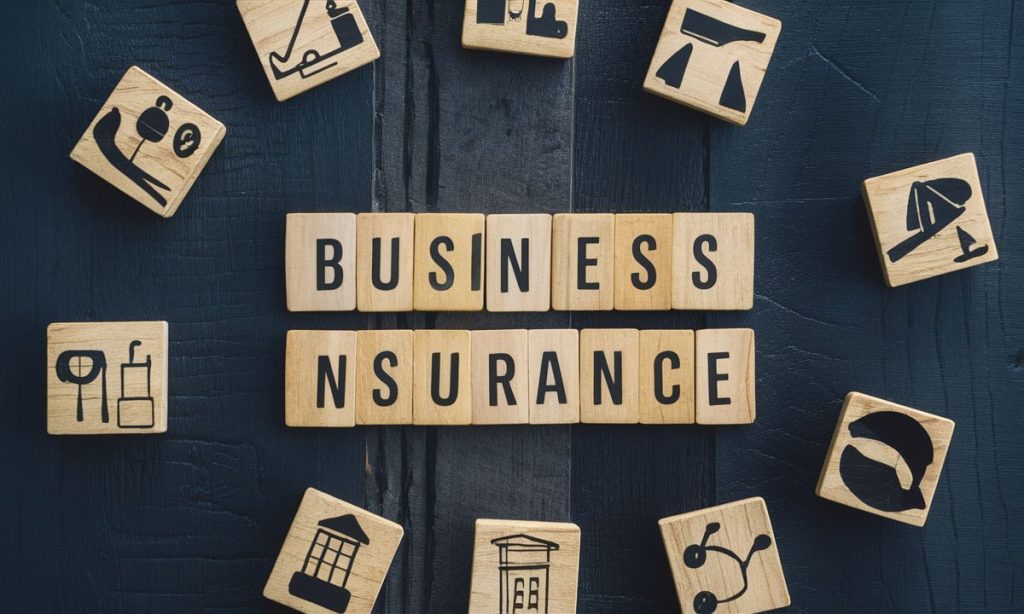Running a business involves countless decisions, but few are as critical as securing proper insurance coverage. Business insurance protects your company from financial devastation caused by lawsuits, property damage, cyberattacks, and employee injuries. Without adequate protection, a single incident could wipe out years of hard work and savings. This guide provides essential information about business insurance types, selection strategies, and cost management to help you make informed decisions that safeguard your company’s future in 2025.
What is Business Insurance and Why Your Company Needs It
Business insurance is a contractual agreement between your company and an insurance provider that protects against financial losses from unexpected events. These policies cover various scenarios including property damage, liability claims, employee injuries, and operational disruptions. The right coverage ensures your business can recover from setbacks without facing bankruptcy or permanent closure.
Beyond financial protection, business insurance fulfills legal requirements and builds credibility. Most states mandate workers’ compensation coverage for businesses with employees, while commercial auto insurance is required for company vehicles. Additionally, clients and vendors often require proof of insurance before signing contracts, making adequate coverage essential for securing partnerships and growing your business.
Essential Types of Business Insurance Every Company Should Know
Understanding core insurance categories helps you build comprehensive protection tailored to your specific business needs and industry requirements.
General Liability Insurance serves as your first line of defense against third-party claims. This coverage protects against:
- Bodily injury claims when customers are injured on your premises
- Property damage your business causes to others
- Advertising injury claims related to slander or copyright infringement
- Legal defense costs and settlements
For small businesses, annual premiums typically range from $400 to $1,500, making it an affordable yet essential investment.
Property Insurance safeguards your physical assets including buildings, equipment, inventory, and furniture against common perils like fire, theft, vandalism, and certain natural disasters. Whether you own or lease your business space, this coverage ensures you can replace damaged assets and continue operations after unexpected disasters.
Workers’ Compensation Insurance is legally required in most states when you employ staff. This coverage pays medical expenses and lost wages for employees who suffer work-related injuries or illnesses. It also protects business owners from employee lawsuits related to workplace accidents, creating a win-win situation for both parties.
Professional Liability Insurance, also known as errors and omissions coverage, protects service-based businesses from negligence claims, professional mistakes, and failure to deliver promised services. Consultants, accountants, lawyers, architects, and healthcare providers particularly need this coverage to protect against malpractice claims and costly legal battles.
Cyber Liability Insurance has emerged as a critical coverage type as businesses increasingly rely on digital operations. This policy covers:
- Data breach response costs
- Ransomware payments and recovery
- Legal expenses from privacy violations
- Business interruption losses caused by cyberattacks
- Customer notification and credit monitoring services
With cyber threats evolving rapidly, this coverage is no longer optional for businesses handling customer data.

How to Choose the Right Insurance Coverage for Your Business
Selecting appropriate coverage requires systematic evaluation of your business profile, risk exposure, and growth plans for optimal protection.
Start by conducting a thorough risk assessment specific to your industry. Construction companies face different hazards than software developers or retail stores. Research common insurance claims in your sector and prioritize coverage addressing those specific risks. Industry associations often provide valuable guidance on recommended coverage types and minimum limits.
Calculate the true replacement value of your business assets. Don’t simply estimate—inventory all equipment, technology, furniture, and inventory to determine accurate coverage needs. Underinsuring leaves you vulnerable to significant out-of-pocket expenses during recovery, while overinsuring wastes premium dollars on unnecessary coverage.
Consider your business growth trajectory when selecting policy limits. If you’re expanding operations, hiring employees, or launching new products, your insurance needs will evolve. Choose policies with flexibility to adjust coverage as your business grows, avoiding gaps that could leave you exposed during critical growth phases.
| Insurance Type | Small Business (Annual) | Medium Business (Annual) | Key Cost Factors |
| General Liability | $400 – $1,500 | $1,500 – $3,000 | Industry risk, revenue, location |
| Property Insurance | $500 – $2,000 | $2,000 – $5,000 | Asset value, location, building age |
| Workers’ Compensation | $800 – $3,000 | $3,000 – $10,000 | Employee count, industry hazards |
| Professional Liability | $500 – $2,500 | $2,500 – $5,000 | Revenue, service type, claims history |
| Cyber Liability | $600 – $2,000 | $2,000 – $7,000 | Data volume, security protocols |
| Commercial Auto | $1,200 – $2,400 | $2,400 – $6,000 | Vehicle count, driver records |
Cost Variables: Location, claims history, coverage limits, deductibles, and industry classification significantly impact final premiums.
Business Insurance Costs: What to Expect and How to Budget
Insurance premiums vary dramatically based on multiple factors that underwriters carefully evaluate. Industry classification significantly impacts costs—high-risk sectors like construction or manufacturing pay substantially more than low-risk industries like consulting or graphic design. Your business location matters too, with urban areas typically commanding higher premiums due to increased liability exposure and property values.
Your claims history plays a crucial role in premium calculations. Businesses with clean records earn better rates, while those with frequent claims face higher costs or coverage denials. Company size, measured by revenue and employee count, directly correlates with premium amounts since larger operations present greater exposure to potential losses.
Proven Tips to Save Money on Business Insurance Premiums
Smart strategies can reduce insurance costs without compromising essential protection for your business operations and financial security.
Bundle Multiple Policies with one insurer to qualify for multi-policy discounts ranging from 10% to 25%. Business Owner’s Policies (BOPs) combine general liability and property insurance at reduced rates compared to buying separately, offering comprehensive protection at lower overall costs.
Implement Safety Programs demonstrating commitment to risk reduction through employee training, safety protocols, and workplace improvements. Insurers reward proactive businesses that minimize claims likelihood through preventive measures, often providing discounts of 5% to 15% for documented safety initiatives.
Increase Deductibles Strategically to reduce premium costs, but ensure you maintain adequate cash reserves to cover out-of-pocket expenses when filing claims. This strategy works best for businesses with strong financial stability and emergency funds available.
Review Coverage Annually because business circumstances change constantly. Annual policy reviews identify unnecessary coverage, adjust limits appropriately, and ensure you’re not paying for outdated protection that no longer matches your current operations.

Common Business Insurance Mistakes That Cost Companies Thousands
Avoiding these frequent errors protects your business from coverage gaps and financial losses during critical moments when you need protection most.
Many business owners underestimate their coverage needs, purchasing minimum required limits to save money. This false economy backfires when major incidents exceed policy limits, leaving businesses responsible for substantial uncovered expenses. Always purchase adequate limits reflecting your actual risk exposure and asset values to ensure comprehensive protection.
Failing to update policies as businesses evolve creates dangerous coverage gaps that expose your company to unnecessary risks. Hiring employees, purchasing equipment, launching new products, or expanding locations all trigger insurance implications. Notify your insurer promptly about business changes to maintain continuous, appropriate protection throughout your company’s growth journey.
Overlooking cyber liability coverage represents a critical modern mistake that could devastate unprepared businesses. Even small businesses face cyber threats, and data breach costs average thousands of dollars in recovery expenses. Many business owners mistakenly believe general liability policies cover cyber incidents, discovering too late that separate cyber coverage is necessary for digital age protection.
Frequently Asked Questions About Business Insurance
What is the minimum business insurance required by law?
Requirements vary by state and industry, but most states mandate workers’ compensation if you have employees and commercial auto insurance for business vehicles used in operations.
How much does business insurance typically cost for startups?
Startups generally pay between $500 to $3,000 annually depending on industry classification, geographic location, and coverage types selected for protecting initial operations and assets.
Can I get business insurance with a bad claims history?
Yes, though premiums will be significantly higher and some standard insurers may decline coverage, requiring you to seek specialized high-risk insurance providers with different underwriting criteria.
Does business insurance cover pandemic-related losses?
Standard policies typically exclude pandemic-related business interruption unless you purchased specific pandemic coverage endorsements before the outbreak occurred and specifically for that risk.
When should I increase my business insurance coverage?
Increase coverage when hiring employees, purchasing expensive equipment, expanding to new locations, significantly growing revenue, or launching new product lines that increase exposure.
Conclusion
Business insurance represents a critical investment in your company’s longevity and financial stability rather than an optional expense. Understanding coverage types, selecting appropriate policies, and implementing cost-saving strategies ensures comprehensive protection without unnecessary financial burden. The insurance landscape continues evolving with emerging risks like cyber threats and changing regulations, making regular policy reviews essential for maintaining adequate coverage that matches your current business operations.
Taking proactive steps to secure proper insurance today prevents devastating financial consequences tomorrow that could end your business overnight. Consult with experienced insurance professionals who understand your industry, compare quotes from multiple reputable providers, and prioritize coverage addressing your specific business risks. Your company deserves protection that allows you to focus on growth and innovation rather than worrying about potential disasters that could derail your entrepreneurial journey and destroy the business empire you’ve worked tirelessly to build over the years.

I M, Kieran Jackson a professional writer with a passion for exploring diverse topics including technology, lifestyle, health, sports, and more. Since 2022, I’ve been working as a correspondent and sports writer for The Independent, where I’ve reported on major events like Formula 1 races in Silverstone, Monza, Zandvoort, and Las Vegas, as well as Wimbledon and Premier League football matches. My work at The Independent has been highly commended in the industry and helped me grow as a journalist. Alongside this, I run my own platform, Flavinto.com, where I personally write and publish in-depth articles on a wide range of topics. Flavinto is not just a blog for me it’s a project I’m passionate about, and my goal is to build it into a trusted brand for readers worldwide? Sy Sochil links twitter AND linkedin.









